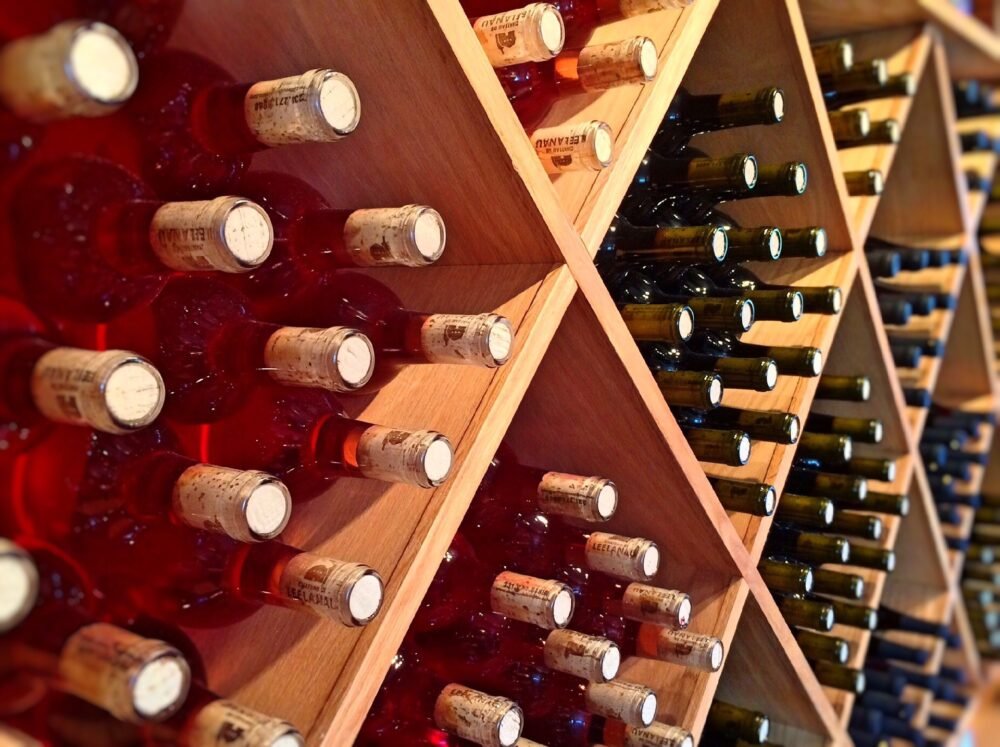How to Choose the Right Wine Glass for Red Wine
Do you know how to choose the right wine glass for red wine? Choosing the perfect wine glass can be quite a puzzle if you aren’t a wine expert and don’t know what to look for. So, I’m sure that my tips on how to choose the perfect wine glass will be very helpful to you.
It is always good to have a glass of wine in the cupboard. Celebrating your anniversary or simply organizing a slightly more special dinner; all of them deserve a toast. Or maybe you can receive a bottle of good wine as a gift. But you feel it’s time to drink that wine with the elegance it deserves.
Table of Contents
Do wine glasses really make a difference?
Tasting a glass of wine involves almost all the senses. The wine experience involves not only taste but also smell and sight. When asked by some people: does the wine change when it is served in different glasses? Yes, of course.
Wine glasses are made to retain aromas. This is why the wine glasses are tall and with an opening smaller than the central diameter of the glass. This helps the aromas to stay inside and not disperse so easily. The glasses must also be large enough to be able to stir the wine inside the glass, oxygenating it and releasing the esters that are not as volatile.
It is surprising to know that serving the same wine in two different glasses can change its characteristic aroma, taste and texture. For this reason, there are different types of glasses to taste specific wines and favour their particularities.
In short, drinking wine in a wine glass is crucial. A glass of wine is so important that Riedel (an Austrian glassmaker) prepared glasses for each of the varietals. For example, if we have an acid wine, it should enter through the centre of the tongue and not on the sides (because there is where we perceive acidity).
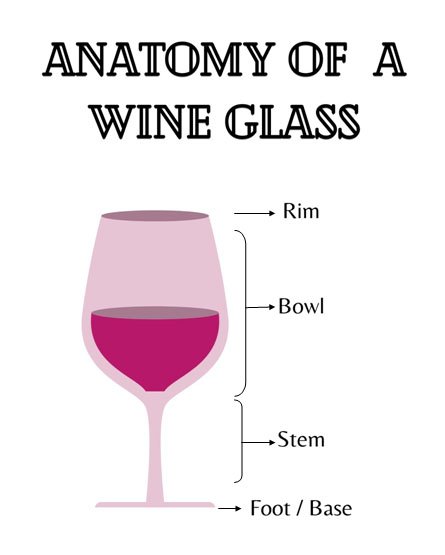
What makes a wine glass a wine glass?
A wine glass has some features that distinguish it from other glasses used for other types of drinks.
The shape
First of all, the shape is very important. And it is proven that the glasses that open outwards at the top lose the aromas instead of concentrating them. For this reason, in a glass of wine, the opening is narrowed (it is shaped like a tulip). In other words, the glass rim should be slightly narrower than the widest part, but not much. Besides, the glass should be big enough to develop wine aromas in fullness.
On the other hand, the glass must have a stem long enough to be able to hold it without touching the bowl. This prevents the wine from heating up on contact with the hand. Moreover, the rim must be straight. Unlike water glasses, their edges shouldn’t be rounded. Finally, the base would be at least as wide as the rim, so that it has good stability when placed on the table.
The material
If you have to choose between glass and crystal, there is no doubt: crystal wine glasses are a perfect choice. And not because it is an imposition. There are a good number of reasons for it to be so. So, crystal wine glasses have many pros. You can read those in the paragraph below.
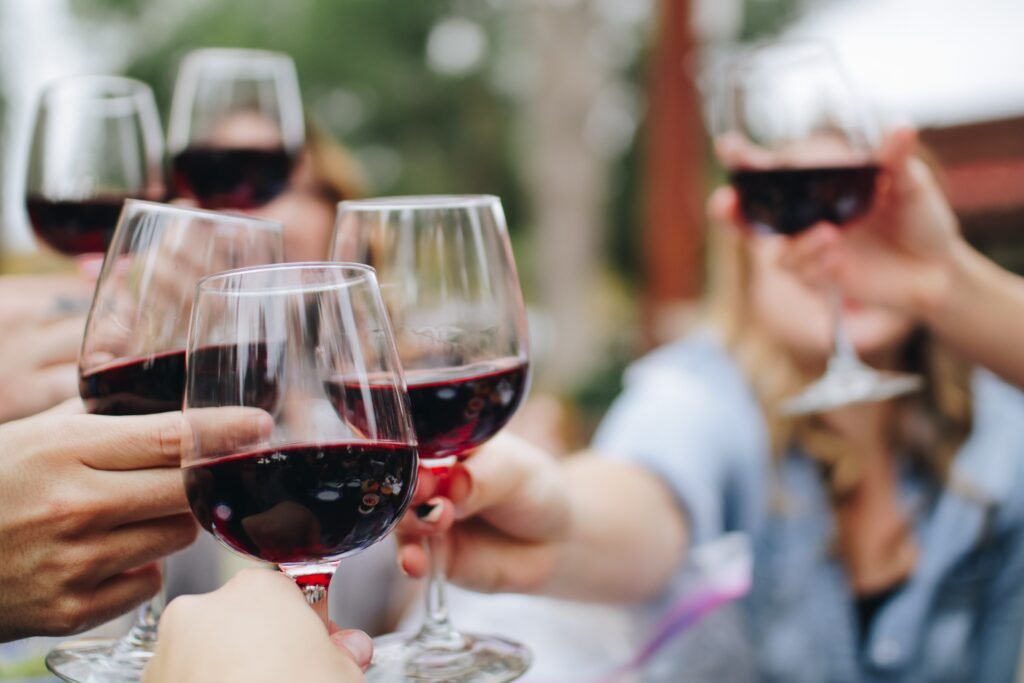
Why are crystal glasses better than glass?
We start with the aesthetic aspect or the first impression: the view. Crystal glasses are much shinier. This isn’t only an aesthetic issue. Crystal brightness improves the enjoyment of the wine experience. In addition to this aspect, there is another key: transparency. Being perfectly colourless, they are ideal for the art of wine tasting.
The crystal also has the physical capacity for refraction and dispersion. So, this feature allows you to use the cup as a true prism. For this reason, professionals and good wine lovers prefer a glass without any colour, engravings, or carvings.
On the other hand, the ear cannot be missing. How? Tap the glass with two fingers. That chink of glasses is the sound of a future delicious drink.
Moreover, there are some features that make crystal glasses the perfect companions for wine. Not only because its touch improves the moment of tasting. Crystal glasses contain lead oxide, which makes them finer and thinner. Lastly, this type of material is more porous than glass. This is ideal to maintain the wine aromas for a longer time and appreciate them better.
If you want to know more, you can read this article about the differences between crystal and glass.
Should wine glasses be thick or thin?
The glass needs to be of extremely fine crystal. Although it will tend to break more easily, the recommended thickness is one millimetre.
Why are thin glasses better?
We continue through another sense: touch. A thin wine glass offers a very different sensory experience when picking up the glass. Besides, this influences the moment of tasting. You perceive wine first through smell and then through taste. And a fine glass can accumulate the wine aroma for longer. Lastly, being thinner helps preserve the temperature of the wine, preventing it from heating up quickly.
What glasses are used for red wine
Next, we are going to list the most famous types of glass, what type of wine they go with and the reason for this decision.
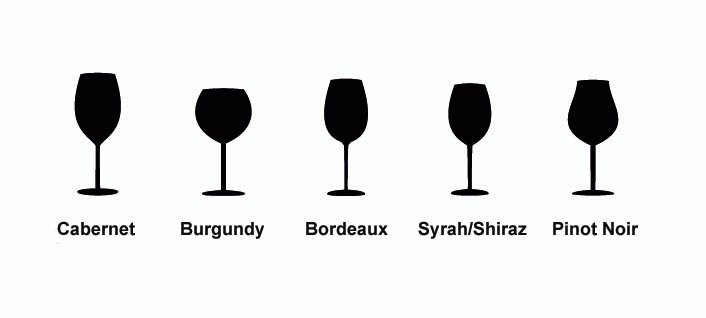
Burgundy

Description: Large bowl, long stem, wide rim and convex shape. Its ball shape facilitates the movement of the wine within it, this also benefits the release of the aroma. Its manufacture is very peculiar since it is a single piece of bell-shaped lead crystal, which allows the wine to breathe.
Recommended wines: It’s used for wines from the Burgundy area, mainly based on the Pinot Noir variety. We also recommend it for red wines that have spent a long season in the barrel and then in the bottle. And also for complex wines that need air to intensify their aromas. For example, Rioja wine, Beaujolais, red Burgundy, and Dolcetto.
Bordeaux
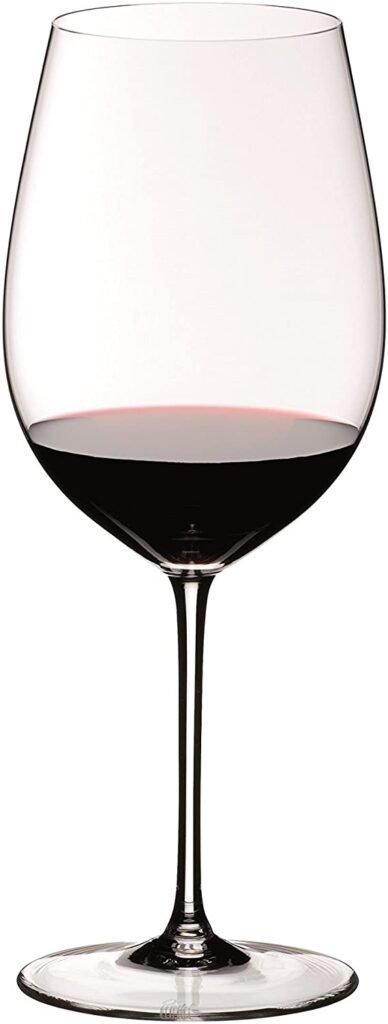
Description: It differs from the burgundy in the bowl. So, this is longer and higher. Its shape makes the aromas concentrate. On the other hand, it allows shaking the glass to awaken them more without saturating the palate. Bordeaux wine glass allows the wine to flow directly into the centre of the mouth. In this way, you can better appreciate the fruity flavours, making them stand out above the tannins, and the acidity reaches the back of the mouth.
Recommended wines: Red wines, preferably young, with a powerful and fruity flavour. For example, Cabernet Sauvignon or Merlot.
Pinot Noir

Description: Pinot Noir glass wine is very similar to Burgundy glass. It has a wide bowl that enables the wine to come into contact with the air. Its shape improves the flavour and aroma of the wine. In other words, it softens the acidity of the wine and intensifies fruity aromas.
Recommended wines: This glass is ideal for medium-tannin wines with high acidity. For example, Pinot Noir, Gamay, Nerello Mascalese or Volnay.
Cabernet
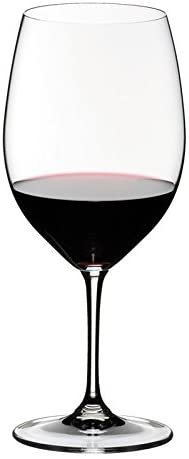
Description: It’s a glass similar to Bordeaux but somewhat smaller in size. The broad bowl allows aeration while the smaller rim circumference intensifies the aroma of the wine. Also, its shape allows you to swirl your wine easily, without the risk of splashing. On the other hand, you can smell the aromas easily while drinking the wine. Finally, this glass balances the wine, highlighting the fruity flavours and softening the tannins.
Recommended wines: The Cabernet glass is perfect for complex, full-bodied red wines high in tannins. So, this glass is perfect to drink wines such as Cabernet Sauvignon, Cabernet Franc, Médoc, Rioja, Moulis, Shiraz or a Tempranillo.
Syrah/Shiraz

Description: This type of wine glass is smaller than most red wine glasses. It’s perfect for well-structured wines with a long finish. The narrow rim directs the flow of wine to the mid-palate. This allows you to appreciate fruit flavours first while the tannins flow to the back of the palate for a smooth finish.
Recommended wines: This is the ideal glass for highlighting the typical aromas of the Syrah grape variety, such as pepper, floral scents and blackberries. Some recommended wines are Malbec, Petite Sirah, Pinotage, Hermitage Rouge and Shiraz / Syrah.
Why are red wine glasses bigger than white?
Red wine glasses are bigger than white because their flavour and aroma are more complex. So, having a larger bowl means there is more surface area and therefore, more air in contact with the wine. As the oxygen chemically interacts with the wine, the flavour and aroma are subtly altered. This oxidation process is generally considered more compatible with red wines. So, their complex flavours soften after being exposed to air.
How full to fill a glass of wine?
The limit is in the widest part of the cup balloon, so it will be better oxygenated. It is also an aesthetic issue: it is more elegant than filling the glass to the top. However, depending on the type of wine that we are going to drink, this measure will change.
- Sparkling wine: In this case, you should use tall, narrow tube glasses that must be filled to the brim without spilling, ideally leaving a centimetre margin.
- White wines: You should fill the glass up to three-quarters. Then, the amount served is more generous than in red wines.
- Young red and Rosé wines: For young red wines the measure would be up to half a glass.
- Aged Red Wines: The ideal would be to fill the wine glass up to a third of it. So, the wine has enough space to release all its volatile aromas.
Summary & Conclusion
- It is key to use a suitable glass to perceive aromas. Its thickness, size, transparency and shape affect how we perceive them.
- It must be made of fine crystal and obviously colourless.
- The diameter of the rim will be less than that of the bowl to retain and channel wine aromas.
- The cup rim should be slightly curved inwards
- The nose must be able to penetrate while drinking
- According to experts, the glasses that best highlight the wine’s qualities are those that bear the name of the varietal, such as those made by Riedel.
There is a long discussion between experts and amateurs about how important the glass is when drinking wine. For most people, it´s too expensive to have different types of glasses for different types of wine at home. In short, it’s enough to have one for red wine and another for white.





